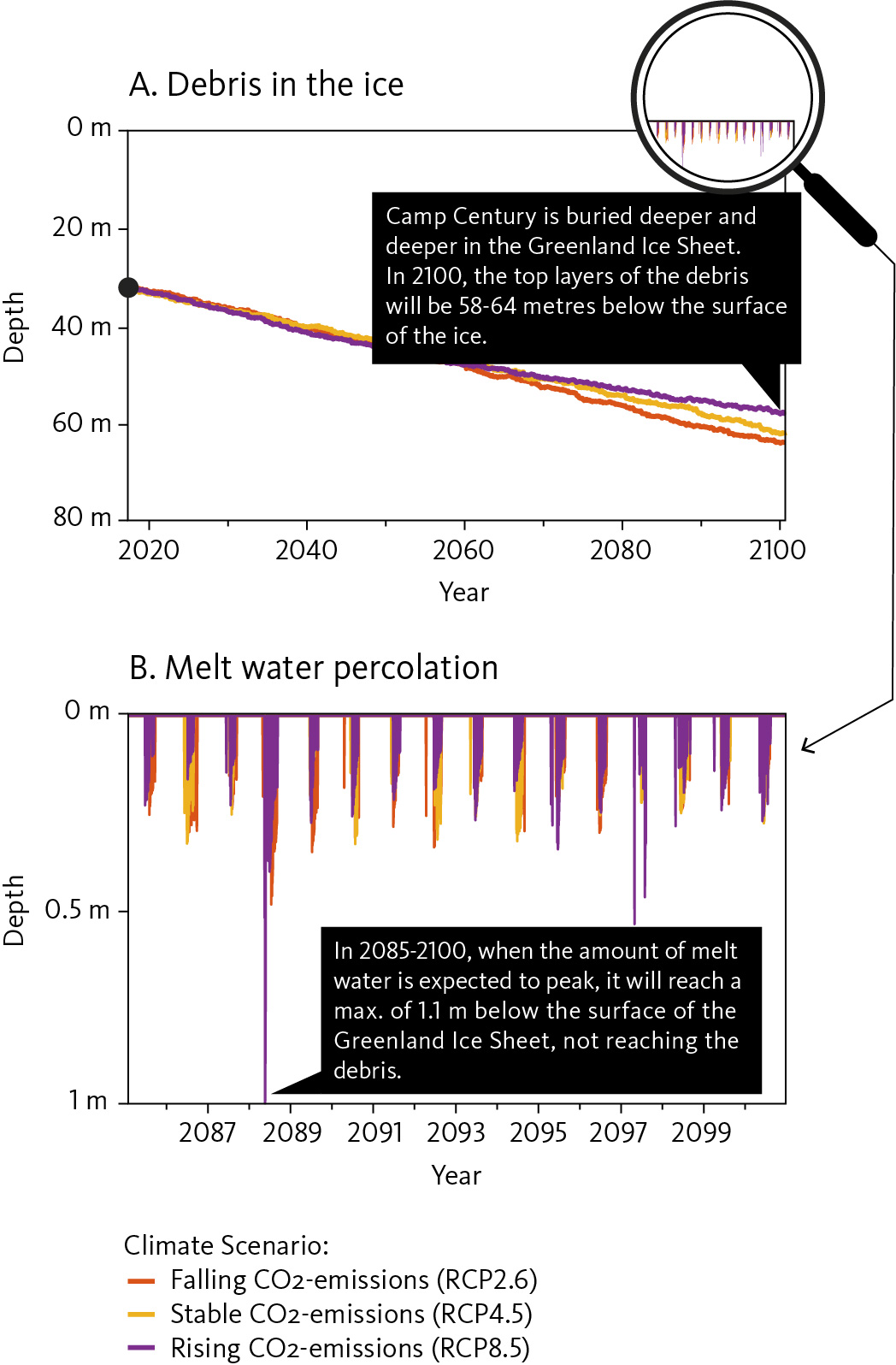A new scientific study concludes that the remains of Camp Century military base will not melt out of the Greenland Ice Sheet, and that the meltwater will not reach debris from the camp given available climate scenarios that run until 2100.
<Camp Century was an American military base established under the surface of Greenland ice sheet. It was decommissioned and abandoned in 1967, and it was expected to remain hidden in the ice forever, but due to climate changes questions regarding the future of the buried station started to arise.
In 2017, the Danish Government and the Government of Greenland decided to set up the Camp Century Climate Monitoring Programme, which is led by the Geological Survey of Denmark and Greenland (GEUS). The work includes monitoring weather and snow at Camp Century, radar surveying of buried debris at the site, and creating computer models projecting the future development of the area.
The monitoring of weather and snow is done using climate stations and you can follow their data here: ../data.html.
You can see the radar mapping of the remains of the camp here: ../news/2019_radarreport.html.
Buried deeper
Now, GEUS scientists have thoroughly analysed the present and future ice-sheet conditions using climate models, as well as data about weather and snow in the area in the last few years. Using mathematical models, the risk of the base debris melting out, as well as meltwater infiltration into the debris, have been calculated for the available climate scenarios from the IPCC until the year 2100.
The climate models show that there will be higher atmospheric humidity and higher temperatures at Camp Century in the future, but despite the rise in surface snow melting each summer, researchers predict greater annual snow fall than summer melting in all future scenarios.
“Since the amount of annual snow will continue to exceed the annual melting, the mapped debris field will continue to be buried deeper in the Greenland ice sheet. In other words: there is no risk that the debris will come to the surface due to melting before 2100,” says William Colgan, project manager and Senior Researcher at GEUS.
This is a different conclusion than the one that was reached by a study published in 2016. This is because the projections now have been adjusted with actual weather measurements from the station at Camp Century, and the measurements show a shorter and colder melting season than that which the earlier calculations were based on.
The meltwater does not reach the base
The Camp Century base is placed in a part of Greenland where surface melt has become more common during the last decades, and if the meltwater reaches the base debris, researchers fear that the meltwater will mix with any potentially contaminated water in the debris.
But the new study shows that, by the end of the century, summer meltwater from the surface will likely only infiltrate to approximately one meter in depth. Radar surveying shows that the base is currently more than 32 metres beneath the ice surface. It is therefore very unlikely that meltwater will interact with the base debris before 2100.
In order to examine whether there is a risk of interaction between meltwater from the surface and debris from the base, a mathematical model has been made describing temperature and density change at different ice depths in the past, present and future, taking as input information the predictions of the climate models.
The model shows how deep the meltwater infiltrates into the ice sheet, depending on the different climate scenarios for the years 2085-2100 when the largest amount of meltwater is expected to occur.
“In all the modelled scenarios the deepest annual meltwater infiltration is 1.1 meter, but in most cases by far the summer infiltration is less than 0.5 meter. Since the debris will then be at a depth of 58-64 metres in 2100, there is no risk of the meltwater from the surface percolating and reaching the remains of the camp by the end of the century,” says Baptiste Vandecrux Postdoc and first author of the scientific article presenting the results.

Read more
The results have been published in the scientific article Firn evolution at Camp Century, Greenland: 1966-2100 in Frontiers Earth Science – Cryospheric Sciences.
The results from the scientific article have been summed up in Danish in the report Camp Century modellering af sne.
Read more about the Camp Century Climate Monitoring Programme on the project website.
